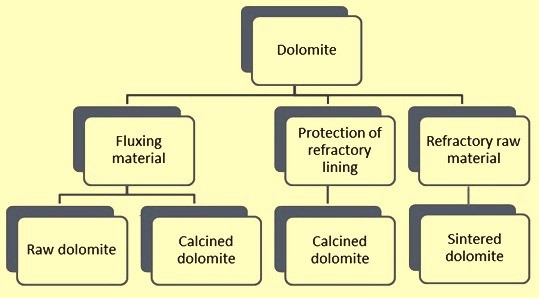Minerals are what giving the rocks different properties, shapes, and structures. To name a multi-functional mineral we can provide an overview of Dolomite that is indeed one of the most significant minerals on earth. You may not have heard the word Dolomite but certainly, you are using products made of that every day. It is named for the French mineralogist Deodat de Dolomieu. It is a double carbonate of calcium and magnesium. It is one of the most important raw materials applied in iron and steel production.
Rocks contain several minerals(+) in the mixture of the particular rock types. In fact, each person uses hundreds of pounds of minerals throughout their lifetime.
The core applications of dolomite in iron and steel industry are
- As a fluxing material
- For protection refractory lining protection, and
- As a refractory raw material.
In iron and steel industry Dolomite is normally used in 3 types:
- Raw dolomite which is also the natural form of dolomite,
- Calcined dolomite
- Sintered dolomite.
When dolomite is used as a fluxing material then it is used as either Calcined dolomite or raw dolomite. When dolomite is used for the refractories protection, it is used in the calcined form and when it is applied as a refractory raw material, it is used in the form of sintered dolomite. The uses and form of dolomite in the iron and steel industry are shown in the table below.

Related product:


